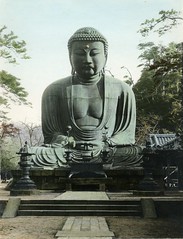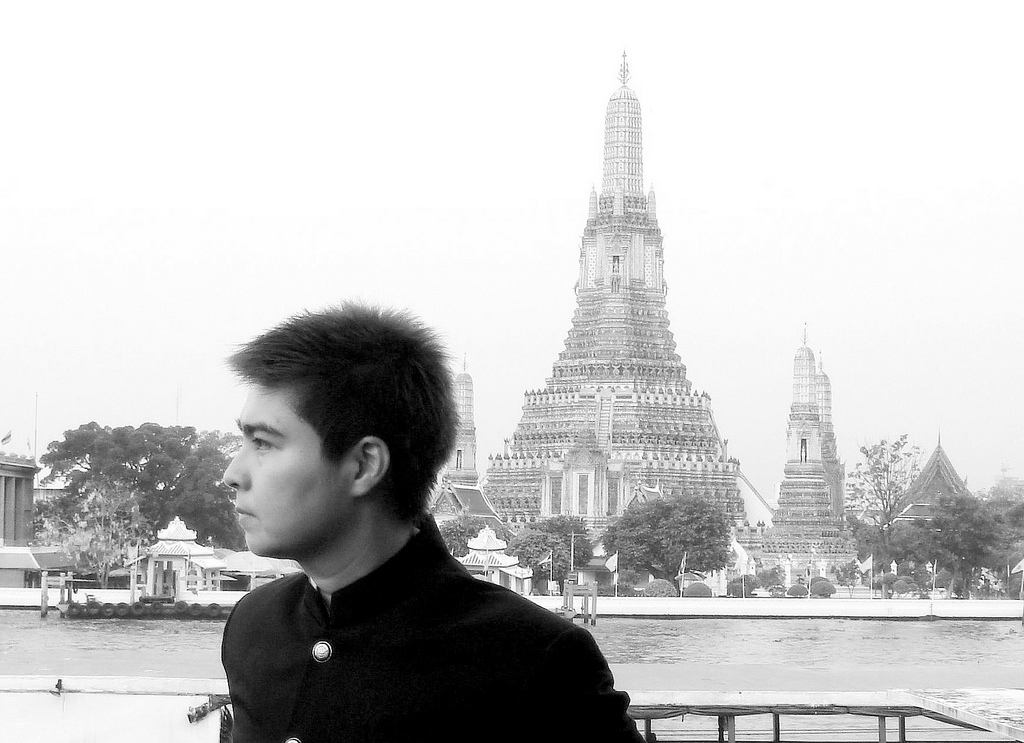Day 16: Another Shocking Sign of Time
This news, however, reminds me again how true Lord Buddha's prediction is of the direction of Buddhism as a religion, not to mention the truth about the Law of Impermanence.
I could perhaps include this in my dissertation when I discuss about Mindfulness in Japan.
Here's the news.
The End of a 1,400-Year-Old Business: "The End of a 1,400-Year-Old Business
What entrepreneurs starting family businesses can learn from the demise of Japanese temple builder Kongo Gumi"
-------------------------------------------------------------------------------------------
On another issue, also related to my dissertation, I managed to do a literature review of some sort while having my haircut today! Well, that was after I decided to download Opera Mini Browser on my phone to try and found that my phone's existing browser is actually already better! Anyway, I decided to make some use on its welcome page so I searched for "Literature" on Wikipedia.
And I was happy that I did, because I learned things that I think I could use for my dissertation as follows.
Literature - Wikipedia, the free encyclopediaen.wikipedia.org/wiki/LiteraTure • Note created April 21, 2007Different historical periods have emphasized various characteristics of literature. Early works often had an overt or covert religious or didactic purpose. Moralizing or prescriptive literature stems from such sources. The exotic nature of romance flourished from the Middle Ages onwards, whereas the Age of Reason manufactured nationalistic epics and philosophical tracts.
Interestingly, the authors of Bushido literature I want to study also lived during what was called the Age of Reason in Europe. And they seem to have the same concern of the moral condition of the society and wrote on the same theme!
Now, as to what "genre" they were writing.
Essays
An essay consists of a discussion of a topic from an author's personal point of view, exemplified by works by Francis Bacon or by Charles Lamb.
'Essay' in English derives from the French 'essai', meaning 'attempt'. Thus one can find open-ended, provocative and/or inconclusive essays. The term "essays" first applied to the self-reflective musings of Michel de Montaigne, and even today he has a reputation as the father of this literary form.
Genres related to the essay may include:
- the memoir, telling the story of an author's life from the author's personal point of view
- the epistle: usually a formal, didactic, or elegant letter.
At first, I was thinking of "decoding" the mindfulness element as a "theme," in the Bushido literature when I saw what "theme" is being described as.
Themes in literature
Theme is a broad idea in a story, or a message conveyed by a work. This message is usually about life, society or human nature. Themes are usually implied rather than explicitly stated. Deep thematic content is not required in literature; however, some readers would say that all stories inherently project some kind of outlook on life that can be taken as a theme, regardless of whether or not this is the intent of the author. Analysis of changes in dynamic characters can provide insight into a particular theme.
But when I continued to read on the links, I discovered yet something new again!
Motif (literature) - Wikipedia, the free encyclopediaen.wikipedia.org/wiki/Motif_%28literature%29 • Note created April 21, 2007Motif (literature)
From Wikipedia, the free encyclopedia
Jump to: navigation, searchFor other uses, see Motive.In literature, a motif or motive is a recurring element that has symbolic significance in the story. Motifs are recurring structures, contrasts, or literary devices that can help to develop and inform the text’s major themes. The motif can be an idea, an object, a place, or a statement. The green light in The Great Gatsby and the repeated statement, "My father said that the reason for living is getting ready to stay dead," in William Faulkner's As I Lay Dying are examples of motifs. A motif can be something that recurs to develop the theme in a novel: In the beginning of To Kill a Mockingbird the children are told never to shoot a mockingbird because mockingbirds do nothing in their life but sing for people. At the end of the novel the theme of senseless killing is re-visited when Mr. Underwood talks of Tom's death.
A motif differs from a theme in that a theme is an idea set forth by a text, where a motif is a recurring element which symbolizes that idea. The motif can also be more like the central idea behind the theme, such as courage or loyalty.
Also known (redundantly) as a recurrent motif.
I guess this is how the word "hidden motif" was derived from?
Well, from what I found out today so far, looks like I have to set a hypothesis that I believe that
- Mindfulness is one of the key motifs in Tokugawa Bushido literature, whether or not it is the intention of the author.
Semiotic literary criticism - Wikipedia, the free encyclopediaen.wikipedia.org/wiki/Semiotic_literary_criticism • Note created April 21, 2007Semiotic literary criticism
Semiotic literary criticism, also called literary semiotics, is the approach to literary criticism informed by the theory of signs or semiotics. Semiotics, tied closely to the structuralism pioneered by Ferdinand de Saussure, was extremely influential in the development of literary theory out of the formalist approaches of the early twentieth century.
The early forms of literary semiotics grew out of formalist approaches to literature, especially Russian formalism, and structuralist linguistics, especially the Prague school. Notable early semiotic authors included Vladimir Propp, Algirdas Julius Greimas, and Viktor Shklovsky. These critics were concerned with a formal analysis of narrative forms which would resemble a literary mathematics, or at least a literary syntax, as far as possible. They proposed various formal notations for narrative components and transformations and attempted a descriptive taxonomy of existing stories along these lines.
Propp's Morphology of the Folktale (orig. Russian pub. 1928; English trans. 1958) provides an example of the formal and systematic approach. In successive chapters, Propp analyzes the characters, plot events, and other elements of traditional folktales (primarily from Russia and Eastern Europe). For each of these key components he provides a letter designation (with superscripts to designate specific subtypes). He proceeds to analyze individual tales by transposing them into this notation and then to generalize about their structure. For example:
- Analysis of a simple, single-move tale of class H-I, of the type: kidnapping of a person.
- 131. A tsar, three daughters (α). The daughters go walking (β³), overstay in the garden (δ¹). A dragon kidnaps them (A¹). A call for aid (B¹). Quest of three heroes (C↑). Three battles with the dragon (H¹–I¹), rescue of the maidens (K4). Return (↓), reward (w°). (Propp 128)
He then gives the complete structure of this story in one line of notation, the analysis complete and ready to be compared systematically with other tales:
- αβ³δ¹A¹B¹C↑H¹–I¹K4↓w°
Later semiotic approaches to literature have often been less systematic (or, in some special cases such as Roland Barthes's S/Z, they have been so specifically and exhaustively systematic as to render the possibility of a complete literary semiotics doubtful). As structuralist linguistics gave way to a post-structuralist philosophy of language which denied the scientific ambitions of the general theory of signs, semiotic literary criticism became more playful and less systematic in its ambitions. Still, some authors harbor more scientific ambition for their literary schemata than others. Later authors in the semiotic tradition of literary criticism include Tzvetan Todorov, Mikhail Bakhtin, Roland Barthes, Julia Kristeva, Michael Riffaterre, and Umberto Eco.
Mathematic formula! Just what I need for my Bushido Literature's dissertation! Could somebody help me please!!!!???? :-) hee hee hee I just like to make a lot of noise and a big fuzz every time I have to face with anything quantitative, that's all. In fact, I have to admit that the equation looks very sexy to me! If I could only prove that there is that certain hidden "mindfulness motif" that is so consistent one could write formula like that out of those 5-6 books I plan to do content analysis on, I would not hesitate to just go ahead and try to prove that!
Well, I should have gone to bed long time ago because I have two sword classes tomorrow! Therefore, pray for me, World!










No comments:
Post a Comment